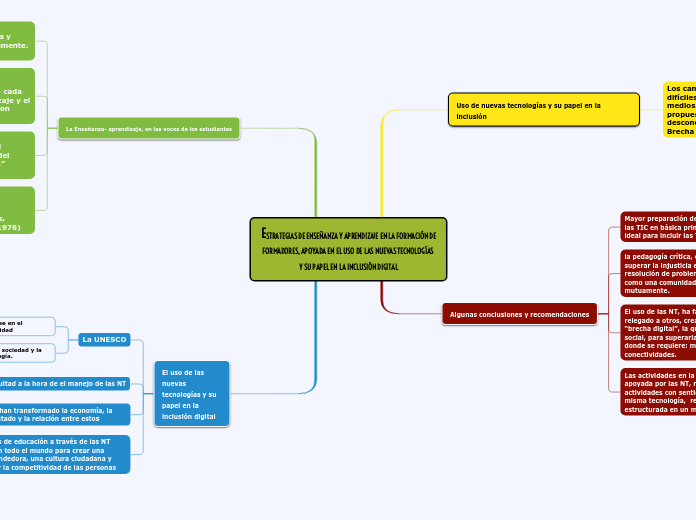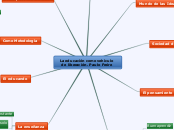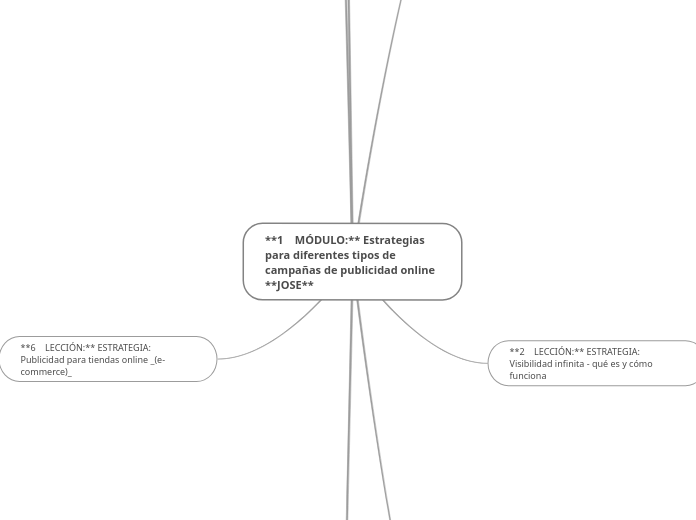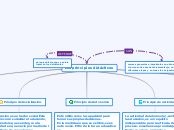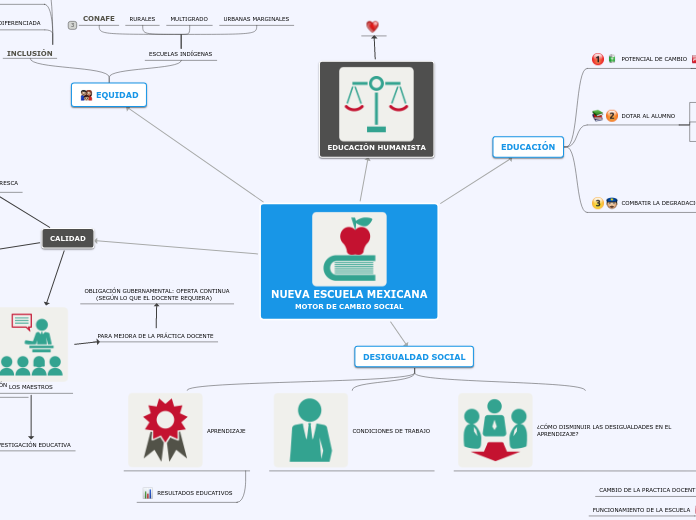INTEGRANTES : Diana Gomez, Cristhian Carvajal, William Moreno
Cohorte XX- Maestría en Pedagogía
ESTRATEGIAS DE ENSEÑANZA Y APRENDIZAJE EN LA FORMACIÓN DE FORMADORES, APOYADA EN EL USO DE LAS NUEVAS TECNOLOGÍAS Y SU PAPEL EN LA INCLUSIÓN DIGITAL
The first division between continents was made by ancient Greek navigators, who named them 'landmass, terra firma'.
Generally classified by convention rather than any strict criteria, nowadays seven regions are regarded as continents from a geopolitical point of view.
El uso de las nuevas tecnologías y su papel en la inclusión digital
Antarctica is not only the coldest place on Earth but also the highest, driest, windiest and emptiest, completely covered with ice.
75% of the world's ice and 70% of the Earth's fresh water is located here.
Summer months of December to February give 24 hours of light, while the winter months of late March to late September are pitch dark the whole day.
There are no permanent inhabitants, except for scientists maintaining research stations in Antarctica.
Nuevas formas de educación a través de las NT siendo igual en todo el mundo para crear una cultura emprendedora, una cultura ciudadana y para aumentar la competitividad de las personas
There is plenty of animal life in Antarctica. It is a continent of extreme conditions but a range of well-adapted animals thrive here at various times of the year.
Name at least 5 of these animals.
Si bien las NT han transformado la economía, la sociedad, el estado y la relación entre estos
Antarctica sees half a year of light and half a year of complete darkness.
Write down which months give 24 hours of light, and which are the ones that give pitch darkness the whole day.
Existiendo desigualdad entre países teniendo unos mejor utilización de las NT
Dificultad a la hora de el manejo de las NT
The coldest natural temperature ever recorded on Earth was recorded here.
Write it down.
Existiendo desigualdad social
La UNESCO
Write down the temperatures of the Frozen Continent during the summer and the winter.
Transformado la forma de ver la vida, la sociedad y la familia, porque se depende de la tecnología.
Cambio en la enseñanza, pasa a centrarse en el estudiante en un ambiente de interactividad
La Enseñanza- aprendizaje, en las voces de los estudiantes
North America has five time zones and it is the only continent with every type of climate.
North America was named after the explorer Amerigo Vespucci and is also known as the 'New World'.
The world's largest sugar exporter among the seven continents - Cuba - also called the 'sugar bowl of the world' is located here.
Aprendizaje significativo:
Transferir lo aprendido en nuevas situaciones y en contextos diferentes, importancia al comprender (Ausbel 1976)
The specialty of some animals is they are found only in a particular region and nowhere else in the world. North America is home to many of such amazing animals.
Name at least 6.
Dimensión Afectiva
“Conocer … es un acto existencial. El componente emocional es partícipe del desarrollo integral como seres vivos.” (Maturana, 1990, p.39)
Native Americans have lived along this river and its tributaries for thousands of years. Most were hunter-gatherers, but some formed agricultural societies.
Formed from thick layers of the river's silt deposits, this river's embayment is one of the most fertile regions of the United States; steamboats were widely used in the 19th and early 20th centuries to ship agricultural and industrial goods.
Name this river.
Aprendizaje Colaborativo
Propicia el desarrollo de habilidades, cada sujeto es responsable de su aprendizaje y el de los demás. Se trata de aprender con otros y de otros.
The world's largest freshwater lake by surface area and the third-largest freshwater lake by volume can be found here. It provides a route for the transportation of iron ore, as well as grain and other mined and manufactured materials.
Large cargo vessels called lake freighters, as well as smaller ocean-going freighters, transport these commodities across this lake.
Name this lake.
Lake type
Aprendizaje autónomo
Voluntad para adquirir conocimientos y experiencias; y renovarlos constantemente. Espíritu crítico.
There are 23 countries that make up North America.
Name as many of you can! Don't forget about their capitals.
Algunas conclusiones y recomendaciones
Australia is the world's smallest continent and is also known as an 'island continent' as it is surrounded by water on all sides.
It includes 14 countries and it is the least populated continent.
Its name comes from the Latin word 'australis' meaning 'southern' because it lies entirely on the south of the equator.
Las actividades en la educación a distancia apoyada por las NT, requieren estrategias y actividades con sentido que promuevan el uso de la misma tecnología, realizando una práctica estructurada en un modelo de colaboración.
Australia is home to some animals that can't be found anywhere else in the world.
Name at least 6 of these unique animals.
El uso de las NT, ha favorecido a muchos sujetos y relegado a otros, creando lo que se ha denominado “brecha digital”, la que a su vez genera inequidad social, para superarla surge la inclusión digital donde se requiere: mayor construcción de conectividades.
The largest sandstone monolith can be found here and it is one of Australia's most recognizable natural icons. It is the largest monolith in the world.
Name this rock and write down one of the characteristics it is famous for.
Famous for
la pedagogía crítica, como punto de inflexión para superar la injusticia e inequidad social siendo la resolución de problemas con el apoyo de los otros, como una comunidad de pensadores que se ayudan mutuamente.
The largest coral reef can be found here.
Name this coral reef, add its length and mention what type of coral is it.
Type
Length
Name
Mayor preparación de los maestros en el área de las TIC en básica primaria donde es el momento ideal para incluir las TIC en lo curricular.
Out of 14, how many countries you can name?
How about these countries' capitals?
Country
Fiji - Suva
Uso de nuevas tecnologías y su papel en la inclusión
Europe is separated from Asia by the Ural mountains and the Caspian Sea.
It is surrounded by water on three sides: Mediterranean Sea in the south, Atlantic Ocean in the west, and the Arctic Ocean in the north.
Three-fourth of the world's potatoes grow in Europe.
Los cambios culturales proponen soluciones difíciles, adaptando la enseñanza a nuevos medios. Dificultades y exigencias propuestas desde los medios: desconocimiento y poco avance tecnológico, Brecha digital
Europe is one of the smallest continents, yet it is home to some of the largest mountain ranges.
About 20% of the total landmass of the continent is considered mountainous.
Name the 5 longest mountain ranges in Europe.
La enseñanza aprendizaje, en las voces de los docentes.
Trabajo individual. Capacidades, responsabilidades, autocontrol y autorregulación
Reflexión: base del pensamiento crítico, solución de problemas, se puede trabajar en grupos
Inclusión: diversidad de sujetos, originalidad, autonomía, autodeterminación. No permite la linealidad (memorización) del conocimiento
Formación: configuración de sujetos, creación de confianza, transformación de la sociedad.
La relación docente-estudiante: Experiencias son más relevantes que métodos
Inclusión: es digital cuando se supera la brecha digital en materiales y talento humano
